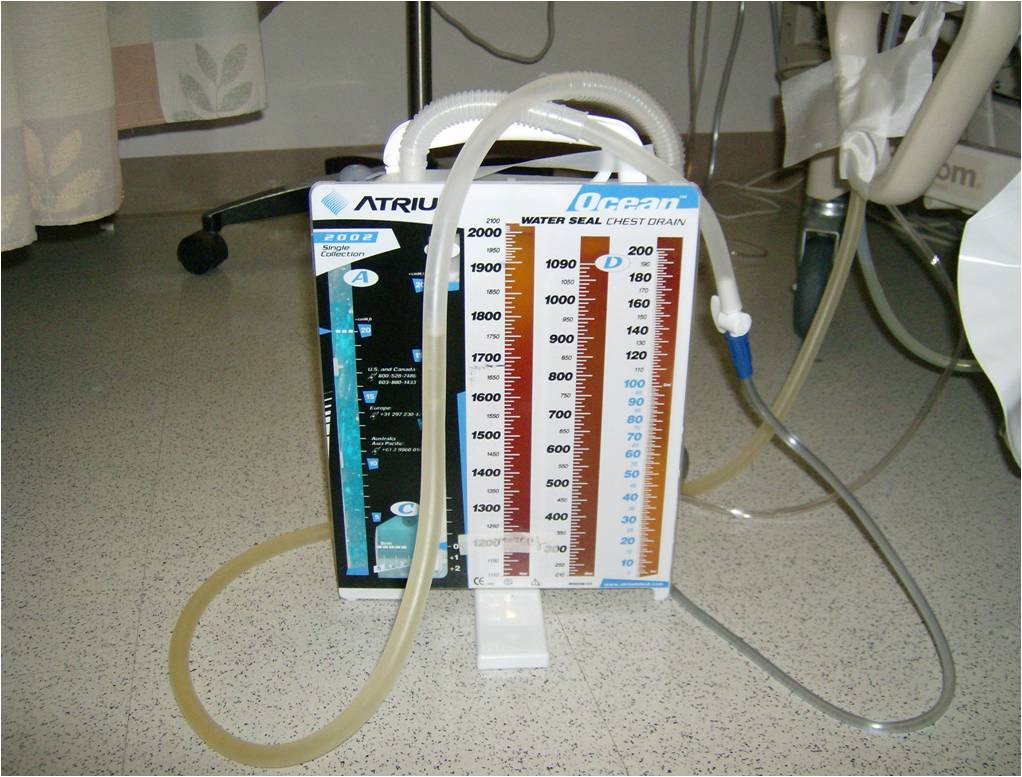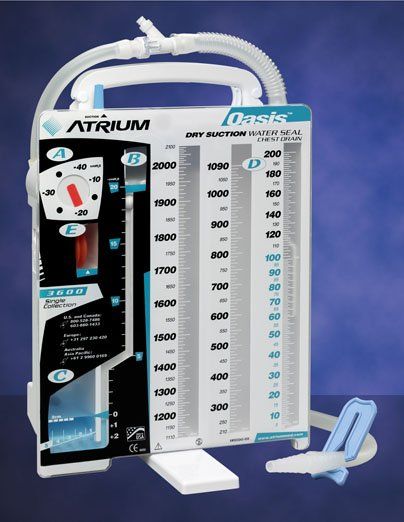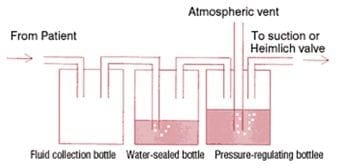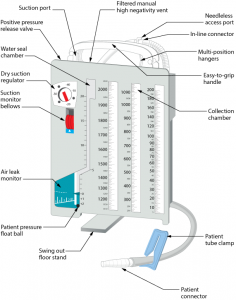Tubes are usually placed in the second intercostal space anteriorly to remove air and the eighth or ninth intercostal space posteriorly to remove fluids.
Chest tube collection device.
Chest tubes are used to treat conditions that disrupt the pleural space.
The collection device should kept below what level.
It is determined by the chest tube drainage device.
The level of the chest.
A chest tube collection device is one way to eliminate any air or fluids that have entered the pleural space and that are causing the negative pressure from becoming positive.
In addition manufacturing of ppe and many other wound care and infection prevention products have been impacted by global response to coronavirus.
A chest tube is essentially a device used to drain air or fluid from the pleural space in order to restore the lungs to normal function.
The tube may be connected to a machine to help with the drainage.
Here you ll find personal guides to wet and dry suction chest drainage setup and operation videos printable wall charts posters and other helpful resources.
What should you do if the chest tube falls out of the patient s chest.
In extreme cases a tension pneumothorax may develop.
Getinge leads the chest drainage industry with the most comprehensive educational materials superior service and 24 hour technical support for the us and canada.
2 the water seal chamber.
The chest tube should contain approximately 6 feet of tubing that connects to a collection device located several feet below the patient s chest.
The pleurevac is a commonly used chest tube system which contains three chambers.
The body can absorb small volumes of fluid or air over time.
This is a simple collection bottle that connects directly to your chest tube.
Look here to see how much blood you ve collected from your hemothorax or fluid from your pleural effusion or pus from your empyema.
And 3 the suction control chamber.
1 the collection chamber.
Instruct the patient not to rest the body on the tubing.
The tube will stay in.
Due to the coronavirus outbreak worldwide global demand for some personal protective equipment ppe is exceeding supply.
The nurse should take this time to check the patient s tubing for twists and kinks in the tubing line.
During chest tube insertion a hollow plastic tube is inserted between your ribs into the pleural space.
So let s move now to the functional components of the chest tube system which we will refer to as bottles or chambers.
First cover the area with dry sterile gauze.
























